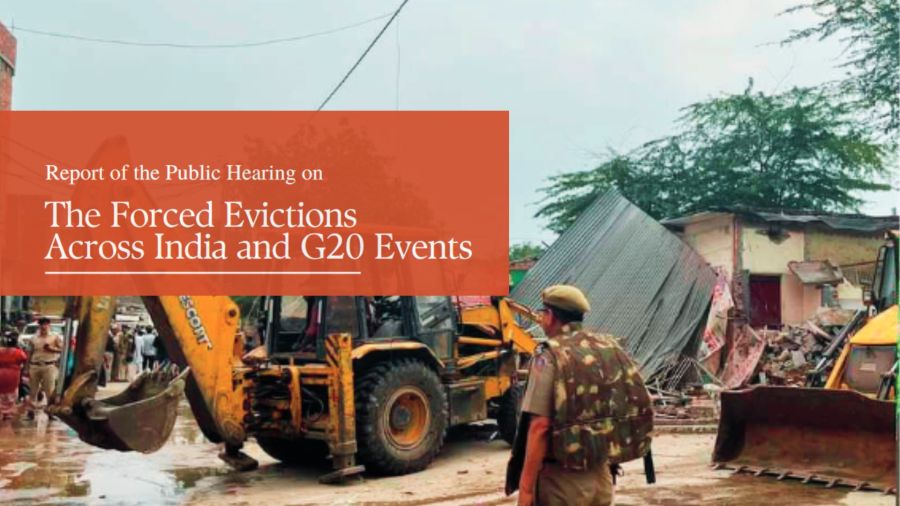The underbelly of the city seems to have muscle memory of deep uncertainty every time a mega event gets declared in the national capital. And the living memory of much of the working population of the city is actually one that resides precariously between one such event to another. So, while the narrative around such events from the top is set largely around infrastructural improvements and state-of-the-art facilities, the costs of such glitter and glitz are largely borne by the most underprivileged and working population of the city living in informal settlements or slums. While in normal times, an eviction is likely to evoke some sympathy, the associated high-pitched narrative of “national pride” that mostly accompanies such mega events acts as a force multiplier in terms of legitimizing such forced evictions. In the general psyche of the people, largely the urban middle class and the affluent, to showcase the host nation in the best possible light, the “undesirables” ought to be either shunted out or made invisible. So such events also serve as safe pretexts to profoundly reshape cities in ways that are detrimental to the interests of the poor and can thereby be unpopular at other times. At times the residents of a slum feel lucky to be spared the bulldozer if they are allowed to accept the indignity of a fence blocking their neighbourhood. The lack of affordable housing, the inhospitable nature of our modern cities, the uncertainty of available jobs – none of these structural issues seems to deter the authorities from mounting such “cleansing” drives. The capital has been through this process before, having endured the scars of the so-called beautification projects that accompanied the hosting of the Asiad in the eighties and the Commonwealth Games in more recent memory, when the corruption and inhuman attitudes that mark the administrative apparatus came into full view.
This time the drive is being launched in the name of the G20 summit that is being hosted by India. The whole project has been turned into a massive PR exercise to present the might and pomp of India’s economic growth on the world stage. Be it in the name of “beautification drives”, or “clearing of encroachments”, “conservation of the Yamuna floodplains” or “protection of monuments”, slums and settlements are being razed across the city. The demolitions in Tughlaqabad and Mehrauli are possibly linked to the heritage walks being planned for the G20 delegates. The Tughlaqabad demolitions, one of the biggest, have left more than 2,50,000 men, women and children displaced. The illegality of such “encroachments” is offered as a reason for the forceful removals, but such arguments are never raised when it comes to the illegal colonies and farmhouses of the elite, or large hotels built on unauthorized land. But the illegality of informal settlements of homeless people is the result of the state’s failure to invest land and resources in affordable social housing. And this time, in the national capital, shelters built by state authorities for homeless people on the orders of the Supreme Court have been demolished; here even the fig leaf of “illegality” does not apply.
Every time large-scale evictions and displacements take place, it has led to some conversations, protest actions, legal battles and policy discussions, yet nothing seems to change and the bulldozers return with renewed vigour as the next such mega event takes place. The fundamental issue is that city planners have never made provisions to accommodate the working poor, forcing them to settle on public land. Over the decades such fundamental concerns like the right to affordable housing continue to remain elusive. This is despite international laws, that India has been signatories to, like the United Nations Basic Principles and Guidelines on Development-based Evictions and Displacement (2007), which recognize forced evictions as a violation of adequate housing.
Read the full report here: G 20 Public Hearing- Report


